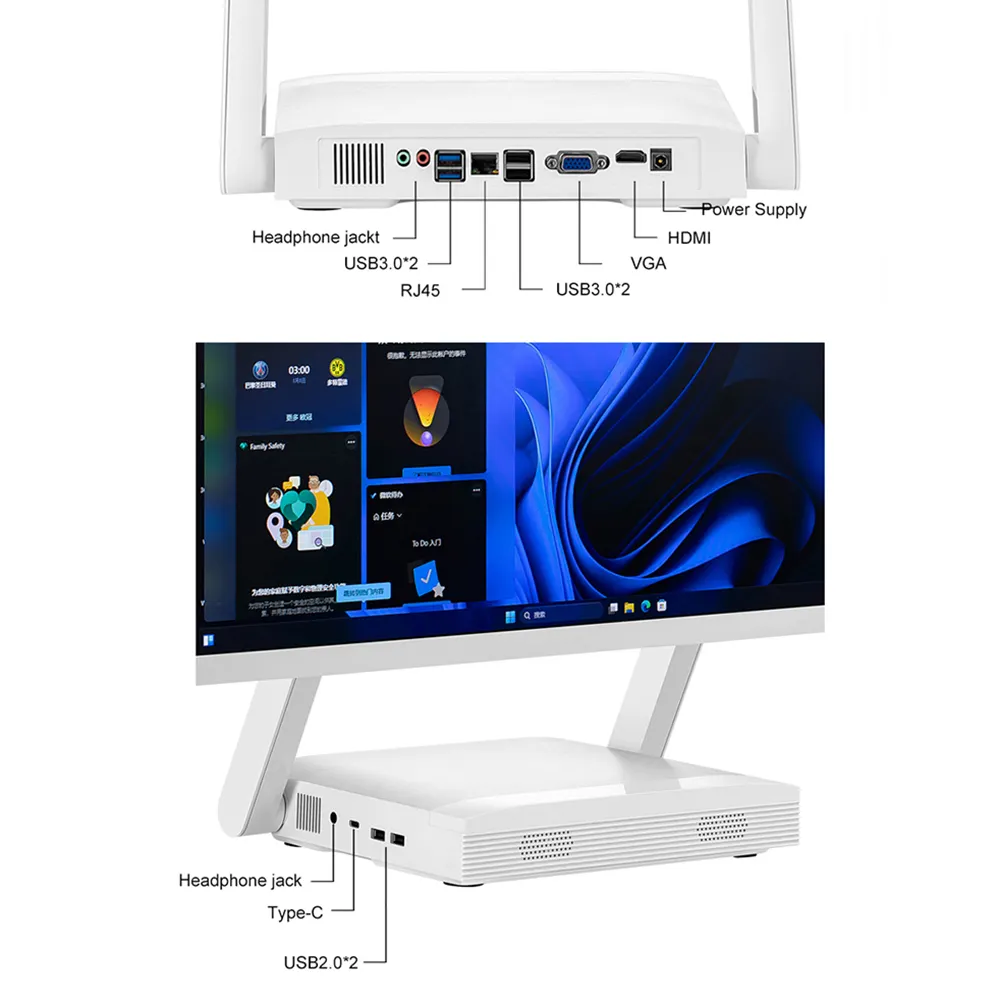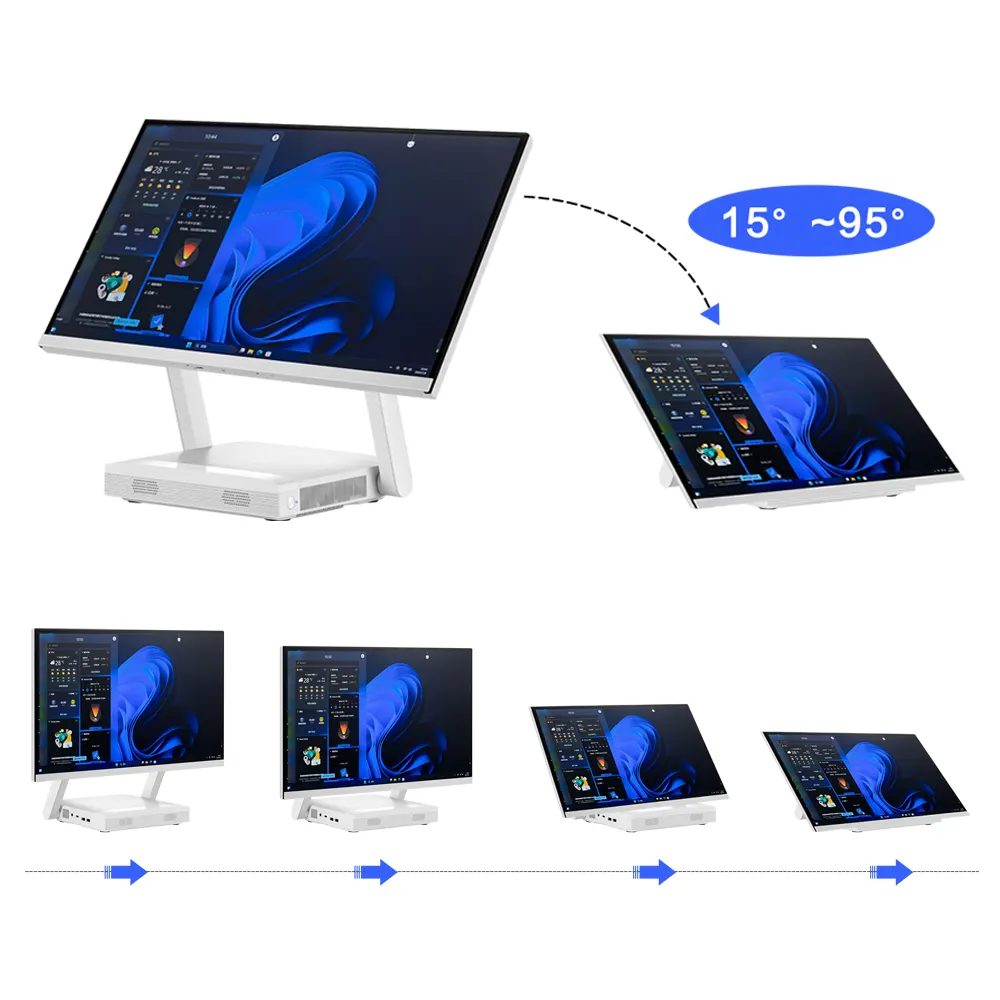The modern workplace continues to evolve, and at the heart of this transformation are all-in-one PCs that are revolutionizing how teams collaborate in meeting rooms. These sophisticated devices combine powerful computing capabilities with sleek displays and integrated communication tools, creating seamless environments for both in-person and remote collaboration. As organizations adapt to hybrid work models, the role of all-in-one PCs in meeting spaces has become increasingly crucial for maintaining productive team interactions.
Today's meeting rooms require technology that can keep pace with dynamic business needs while providing intuitive user experiences. All-in-one PCs have emerged as the cornerstone of modern meeting spaces, offering elegant solutions that eliminate cable clutter, reduce setup time, and enhance the overall meeting experience. Their impact on workplace collaboration extends far beyond simple presentation capabilities, fostering an environment where ideas flow freely and teams can work together effectively regardless of physical location.
Modern all-in-one PCs come equipped with high-definition displays, powerful processors, and built-in cameras that eliminate the need for external peripherals. These systems feature premium audio components, ensuring crystal-clear sound for video conferences and multimedia presentations. The integration of touch-screen capabilities further enhances interaction, allowing presenters to annotate content and manipulate data in real-time.
Storage solutions in these devices are designed to handle large presentation files and collaborative documents, while multiple ports accommodate various connection needs. The thoughtful hardware design ensures that all components work harmoniously, reducing technical issues that could disrupt important meetings.
All-in-one PCs for meeting rooms come pre-configured with collaboration software suites that support various meeting formats. These systems seamlessly integrate with popular video conferencing platforms, document sharing tools, and digital whiteboarding applications. The software ecosystem is designed to facilitate instant screen sharing, real-time document editing, and seamless transitions between different presentation modes.
Advanced features such as gesture control and voice recognition are increasingly common in these systems, making interaction more natural and intuitive. The software interface is optimized for both touch and traditional input methods, accommodating different user preferences and meeting styles.

One of the most significant advantages of all-in-one PCs in meeting rooms is their ability to eliminate the traditional setup hurdles. Users can walk into a meeting space and begin presenting or collaborating within seconds. The integrated design means there's no need to connect external displays, speakers, or cameras, saving valuable meeting time and reducing technical frustrations.
These systems often feature one-touch meeting start capabilities, allowing participants to join scheduled conferences instantly. The simplified user interface ensures that even less tech-savvy team members can operate the system confidently, promoting broader participation in collaborative sessions.
All-in-one PCs transform traditional presentations into interactive experiences. Presenters can easily annotate slides, create dynamic content, and respond to audience input in real-time. The large touch-enabled displays allow multiple participants to interact simultaneously, fostering collaborative problem-solving and brainstorming sessions.
The ability to seamlessly switch between different content sources and presentation modes keeps meetings dynamic and engaging. Teams can quickly transition from slides to video content, web demonstrations, or collaborative documents, maintaining audience attention and promoting active participation.
All-in-one PCs excel at creating inclusive meeting experiences for both in-person and remote participants. High-quality cameras and microphones ensure remote attendees can see and hear clearly, while advanced audio processing reduces background noise and echo. The systems often include features like automatic participant framing and speaker tracking, making remote participants feel more connected to the in-room discussion.
These devices support simultaneous content sharing and video feeds, allowing remote participants to view both the presenter and shared materials. The integration of chat features and reaction tools ensures remote team members can actively contribute to discussions and provide feedback in real-time.
Modern all-in-one PCs adapt to various meeting formats, from formal presentations to impromptu collaborative sessions. The systems support multiple virtual breakout rooms, allowing teams to split into smaller groups for focused discussions before reconvening. The ability to record meetings and automatically transcribe discussions helps teams capture important information and share it with absent members.
The versatility of these systems extends to supporting different team sizes and meeting objectives. Whether it's a quick stand-up meeting or an extended strategy session, all-in-one PCs provide the tools necessary for effective collaboration.
The next generation of all-in-one PCs will incorporate more advanced AI capabilities, enhancing meeting experiences through features like automated note-taking, real-time translation, and intelligent meeting summaries. AI-powered systems will be able to analyze meeting patterns and suggest ways to improve collaboration efficiency.
Machine learning algorithms will help optimize room settings based on meeting types and participant preferences, creating more personalized and productive meeting environments. The integration of AI assistants will streamline common tasks and provide instant access to relevant information during discussions.
As all-in-one PCs become more central to business operations, manufacturers are strengthening security features and management capabilities. Advanced authentication methods, encrypted communication channels, and secure data handling ensure sensitive information remains protected during collaborative sessions.
IT departments benefit from improved remote management tools, allowing them to monitor system health, push updates, and provide support without disrupting meetings. The ability to centrally manage multiple meeting room systems reduces maintenance overhead and ensures consistent experiences across different locations.
All-in-one PCs integrate computing power, display, audio, and video components into a single unit, eliminating the need for multiple devices and complex cable connections. This integration results in easier setup, improved reliability, and a more streamlined user experience compared to traditional meeting room arrangements.
These systems provide high-quality audio-visual capabilities, intuitive collaboration tools, and seamless integration with virtual meeting platforms. The combination of advanced hardware and software ensures remote participants can fully engage in discussions and contribute effectively to team activities.
Key considerations include the size and typical usage of meeting spaces, required collaboration features, compatibility with existing software tools, security requirements, and scalability needs. Organizations should also evaluate support options, warranty coverage, and the manufacturer's track record in business computing solutions.
